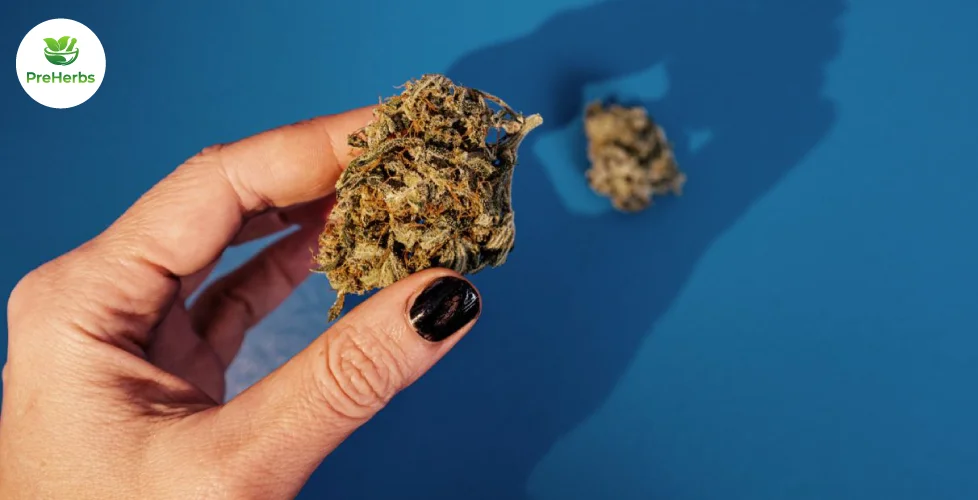The Blue Lotus strain, also known as Nymphaea caerulea, is a fascinating plant with a rich history and a variety of uses. Known for its beautiful blue flowers and significant cultural importance, the Blue Lotus has been used for centuries for its medicinal, recreational, and spiritual benefits. In this blog, we will delve into the origins, benefits, uses, and cultivation of the Blue Lotus strain.
Origins and History
The Blue Lotus is native to Egypt and parts of East Africa.
Ancient cultures, particularly the Egyptians, have revered it, associating it with the sun god Ra and the creation myth. Ancient Egyptian art often depicts the plant, symbolizing rebirth and the afterlife. They also used it in rituals and ceremonies for its psychoactive properties.
Related blog A comprehensive guide to understanding blue lotus effects, benefits, and meanings
Botanical Characteristics
The Blue Lotus is an aquatic plant that thrives in shallow, warm waters. It has large, round leaves that float on the water’s surface, while its striking blue flowers rise above the water. The flowers have a sweet, floral scent and are known to bloom during the day and close at night.
Psychoactive Properties and Benefits
The Blue Lotus contains several compounds, including aporphine and nuciferine, which contribute to its psychoactive effects. These compounds interact with dopamine receptors in the brain, leading to a sense of euphoria and relaxation. Here are some of the benefits and effects of the Blue Lotus strain:
- Relaxation and Stress Relief: The Blue Lotus is known for its calming effects, making it an excellent natural remedy for stress and anxiety. Consuming Blue Lotus can help soothe the mind and body, promoting relaxation and tranquility.
- Enhanced Mood: The euphoric effects of the Blue Lotus can enhance mood and provide a sense of happiness and well-being. It is often used to alleviate symptoms of depression and boost overall mental health.
- Aphrodisiac Properties: Historically, the Blue Lotus has been used as an aphrodisiac. It is believed to enhance sexual desire and performance, making it a popular choice for those looking to improve their intimate experiences.
- Mild Sedation: The sedative effects of the Blue Lotus can help with insomnia and other sleep disorders. It promotes restful sleep without the grogginess often associated with pharmaceutical sleep aids.
- Pain Relief: Some users report that the Blue Lotus has analgesic properties, making it useful for managing mild to moderate pain.
Related blog From Ancient Rituals to Modern Relaxation: The Journey of the Blue Lotus Strain
Methods of Consumption
Understanding the various methods of cannabis consumption is essential for maximizing its benefits and ensuring safe use. From smoking and vaping to edibles and tinctures, each method offers unique advantages and experiences.
There are several ways to consume Blue Lotus to experience its benefits:
Tea: One of the most common methods is brewing Blue Lotus tea.Steep the dried flowers in hot water to create a fragrant and soothing beverage.
Tinctures: You can take Blue Lotus tinctures as concentrated liquid extracts sublingually (under the tongue) or by adding them to drinks.
Smoking: The dried petals of the Blue Lotus can be smoked alone or mixed with other herbs. This method provides quick onset of the plant’s effects.
Wine Infusion: Historically, the Egyptians would steep Blue Lotus flowers in wine, enhancing the wine’s psychoactive properties. This method is still used today for a unique and potent experience.
Edibles: You can incorporate Blue Lotus into various edible products, such as chocolates and gummies, for a tasty way to consume the plant.
Cultivation
Growing Blue Lotus can be a rewarding experience for those interested in cultivating this beautiful and beneficial plant. Here are some tips for successful cultivation:
- Environment: Blue Lotus thrives in warm, shallow water with plenty of sunlight. It can be grown in ponds, water gardens, or large containers.
- Planting: You can grow the plant from seeds or rhizomes. Scarify (scratch) and soak seeds in warm water before planting. Plant rhizomes directly in the soil at the bottom of the water feature.
- Water Quality: Ensure the water is clean and free of pollutants. Blue Lotus prefers slightly acidic to neutral pH levels.
- Maintenance: Regularly remove dead leaves and flowers to keep the plant healthy and encourage new growth. Fertilize sparingly with aquatic plant fertilizer.
- Harvesting: Harvest flowers once they are fully open. Use them fresh or dry them for later use.
Precautions and Side Effects
Although people generally consider Blue Lotus safe, it’s important to use it responsibly. Some potential side effects include dizziness, nausea, and mild gastrointestinal discomfort. It is also important to note that the effects of Blue Lotus can be potent, especially when consumed in large quantities. Always start with a small dose to gauge your body’s response.
Additionally, those who are pregnant, nursing, or have underlying health conditions should consult a healthcare provider before using Blue Lotus.
Related blog Unveiling the Mystical Influence: The Profound Effects of Blue Lotus
Conclusion
The Blue Lotus strain is a remarkable plant with a rich history and a wide range of benefits. Whether you are seeking relaxation, mood enhancement, or a natural aphrodisiac, the Blue Lotus offers a unique and natural solution. By understanding its origins, properties, and methods of use, you can safely and effectively incorporate this ancient plant into your wellness routine.



